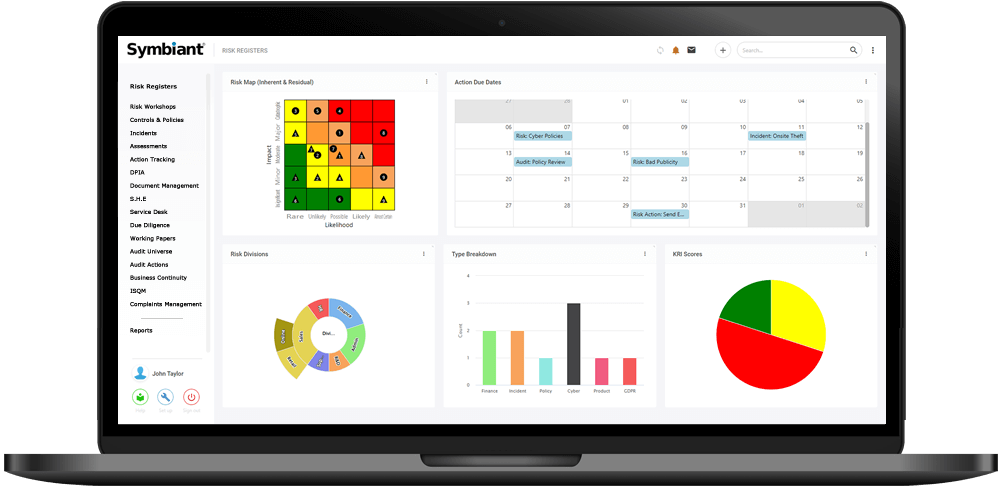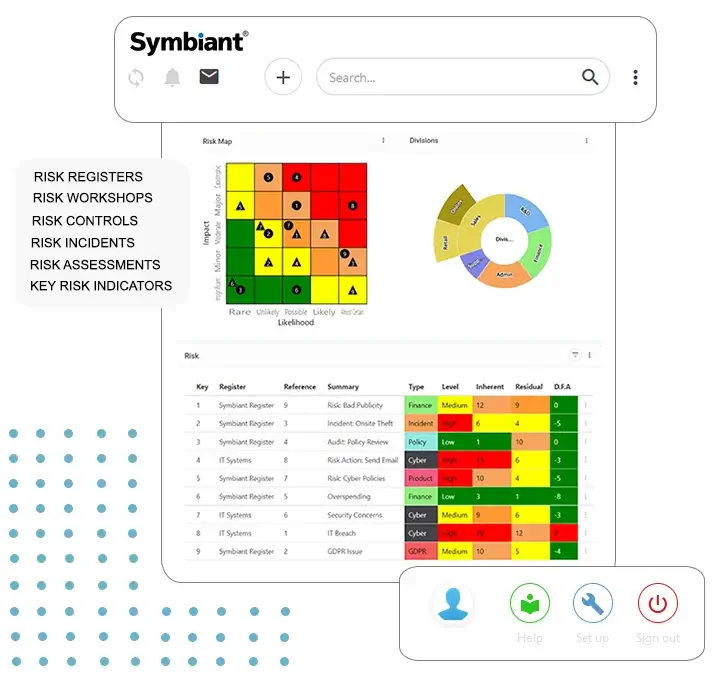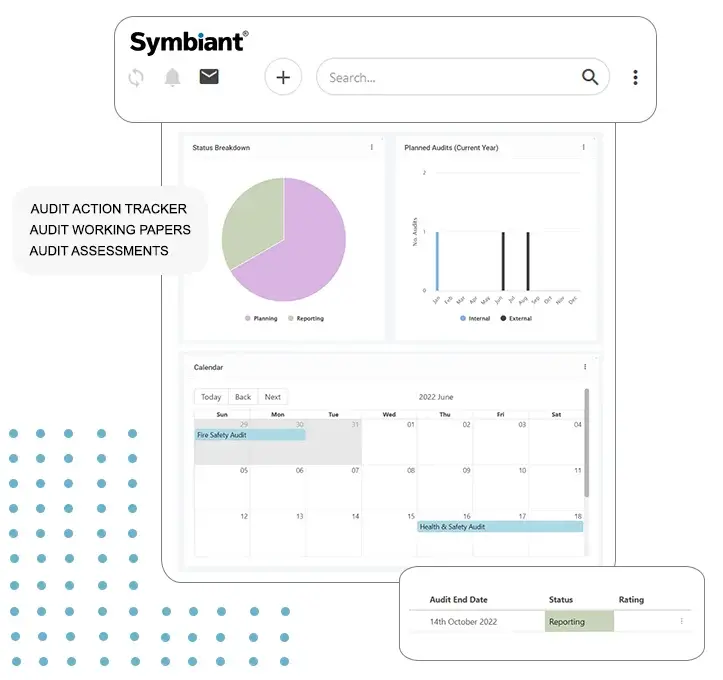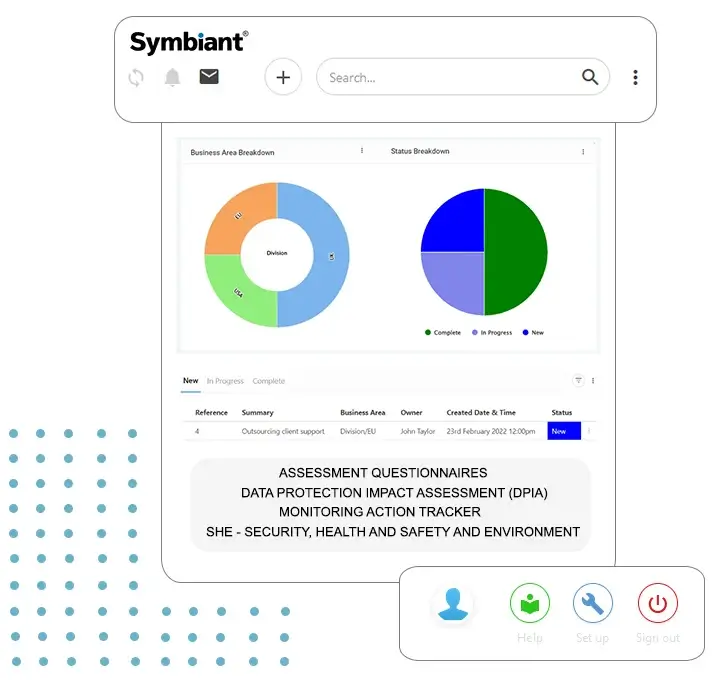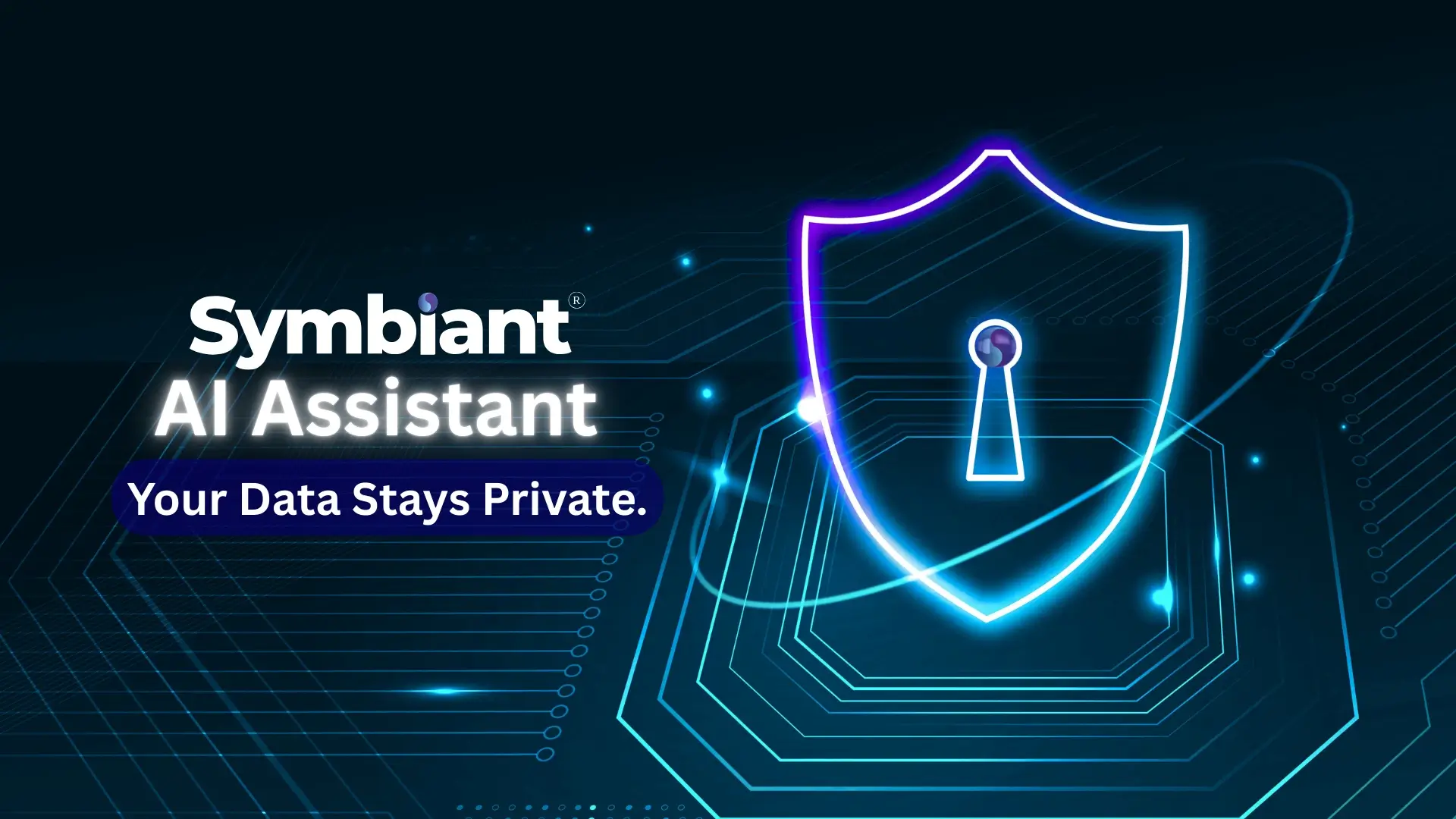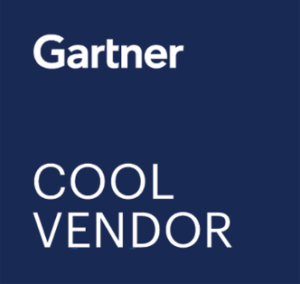In today’s rapidly evolving business environment, the demand for robust governance, risk management, and compliance (GRC) practices has never been higher. Being able to automate GRC & audit tasks can remove the issues of cumbersome manual processes that consume valuable time and resources.
This blog post explores how innovative software solutions revolutionise GRC and audit operations by automating labour-intensive GRC & Audit tasks.
From centralised data management to generating comprehensive audit reports, streamlining workflows, and enhancing reporting capabilities, software-driven automation is reshaping the landscape of GRC and audit management.
Real-time Monitoring and early detection
Real-time monitoring involves the continuous collection and analysis of data to provide insights into systems, processes, or events with minimal delay.
Moreover, automated monitoring systems can be configured to send alerts to the appropriate personnel, enabling businesses to proactively address issues before they result in significant system downtime or data loss.
Furthermore, the benefits of real-time monitoring and early detection include:
- Improved safety standards,
- Efficient decision-making,
- Faster issue resolution,
- Proactive monitoring,
- And compliance and audit support.
Using real-time monitoring tools and automated protocols enables businesses to proactively address issues and make informed decisions based on timely and accurate data.

Centralised data management
Centralised data management offers several benefits, including:
- Improved data integrity
- Reduced data redundancy,
- Cost savings,
- Valuable insights,
- And centralised reporting.
By consolidating data into a central repository, organisations can ensure data accuracy, minimise errors, and simplify access to information.
Automated centralised data management enhances organisations’ ability to regulate data access, minimise risk, and achieve cost savings. Furthermore, it supports efficient processes, faster data manipulation, improved collaboration, and ensures consistency, security, and a better user experience.
Moreover, in this context, a Single Source of Truth (SSOT) refers to a single, authoritative data source. Implementing an SSOT approach brings benefits such as improved data accuracy, better integration, and enhanced security.
Comprehensive audit report matrix
The comprehensive audit report matrix is a tool used to provide a historical record of governance, risk, and compliance activities. Additionally, it can be automated to streamline the process and improve efficiency.
Moreover, the matrix typically includes audit objectives, scope, findings, and suggestions. This allows for the documentation of IT infrastructure, policies, and procedures, as well as the evaluation of security measures for existing and developing systems and applications.
Automated workflows
Automated workflows aim to balance user-friendliness and robust functionality, enhancing operational efficiency. In addition,
Workflow automation involves using technology to streamline repetitive and time-consuming tasks, ensuring consistent and error-free execution, optimising operational flow, and freeing time for more strategic endeavours. Furthermore,
The benefits of workflow automation include:
- Increased efficiency: By automating repetitive tasks, workflow automation saves time and reduces errors.
- Boosted productivity: It reallocates efforts to higher-value activities, allowing employees to focus on more strategic responsibilities.
- Saves time: By streamlining workflows and automating routine tasks, workflow automation reduces the time required to complete processes.
- Reduces errors: Automation eliminates the risk of human errors in highly repetitive tasks, maintaining data integrity and enhancing output quality.
- Enhances collaboration and communication: Workflow automation ensures that information flows seamlessly between different systems, improving collaboration and communication within the organisation.
- Ensures compliance with internal and external policies: Automation can help organisations comply with data security and privacy regulations by ensuring that automated systems are secure and compliant.
Moreover, workflow automation is a versatile approach that finds applications across many industries and departments. Its potential for streamlining processes and enhancing productivity is virtually limitless.
Automated reporting capabilities
Automated reporting capabilities are essential for informed decision-making, business continuity, efficiency, and consistent compliance. Moreover,
These capabilities involve using technology to create and deliver reports to business users on a predefined schedule or triggered by user-defined events. Additionally,
Automated reporting offers several benefits, including time and cost savings, reduced errors, improved data security, and enhanced compliance with internal and external policies. Furthermore,
Key features of automated reporting capabilities include:
- Role-based access control: Providing secure data sharing and access through configurable permission settings and user activity auditing.
- Data preparation: Automated data ingestion from various sources, support for real-time data ingestion, and on-demand or scheduled data refresh.
- Customisable dashboards and visuals: Offering a wide range of visuals for creating custom dashboards and providing highly visual insights.
- Event-based report generation and distribution: Running reports based on specific events or triggers, such as when specific business metrics reach abnormal levels.
Moreover, mobile reporting enables access to reports via various mobile devices, ensuring critical information is available anytime, anywhere.
How Symbiant can Automate your GRC & Audit Tasks
Symbiant.One can automate any GRC & Audit task based on a rule, such as sending notifications, updates, reminders, reports, or automatically changing data when something happens.
Real-Time Risk Monitoring and Early Detection:
Symbiant’s Risk Register Module provides Real-time calculated risk appetites and risk flows. The module allows you to link risks in a parent-child hierarchy, visualising the full cascade effect of a risk failure and seeing the potential impact the risk has on your business. The visual Risk Flows allow you to see the real-time domino cascade effect of Risks connected.
Connecting the Risk Register module with the Controls And Policies Module allows you to track the impact of your organisation’s controls and policies on your risks – and automatically sends notifications if a control fails.
Centralised Data Management:
Symbiant’s Document Manager Module is a central repository that stores and manages all your documents within a structured framework. This module operates to establish an SSOT (Single Source of Truth) where users can access relevant documents, preventing duplicates and ensuring the information remains current and accurate. Additionally, it supports the interlinking of documents, fostering an interconnected repository for seamless navigation and reference.
Comprehensive Audit Report Matrix:
The Audit Universe Module is a repository for all your assets and entities that you need to audit. This module allows you to prioritise and manage what needs to be audited by, at a glance, seeing information such as estimated auditing days, the scope, the results of previous audits, etc. The module also allows you to link risks to your audits so you can see if any risk-related assets or entities need to be audited.
Automated Workflows:
Symbiant.One can automate any task based on a rule, such as sending notifications, updates, reminders, reports, or automatically changing data when something happens. If a deadline is approaching, automatic notification emails can remind people what they still need to do; the system automatically notifies management if deadlines are coming close or have elapsed. If a user adds or changes data, specified users, such as managers or risk owners, can be notified so they are aware of a new item or data change. Notifications and triggers can also be based on thresholds changing, such as a risk score going beyond a certain level or if data matches specific criteria.
Automated Reporting Capabilities:
We offer bespoke reports to enhance your efficiency and effectiveness. These custom reports are designed to align with your specific information needs and present data in a manner that serves your decision-making processes optimally. The advantage of bespoke reports lies in their ability to reduce the time spent on manual report generation. This allows you to redirect your efforts towards leveraging the insights and strategic value the reports provide.
